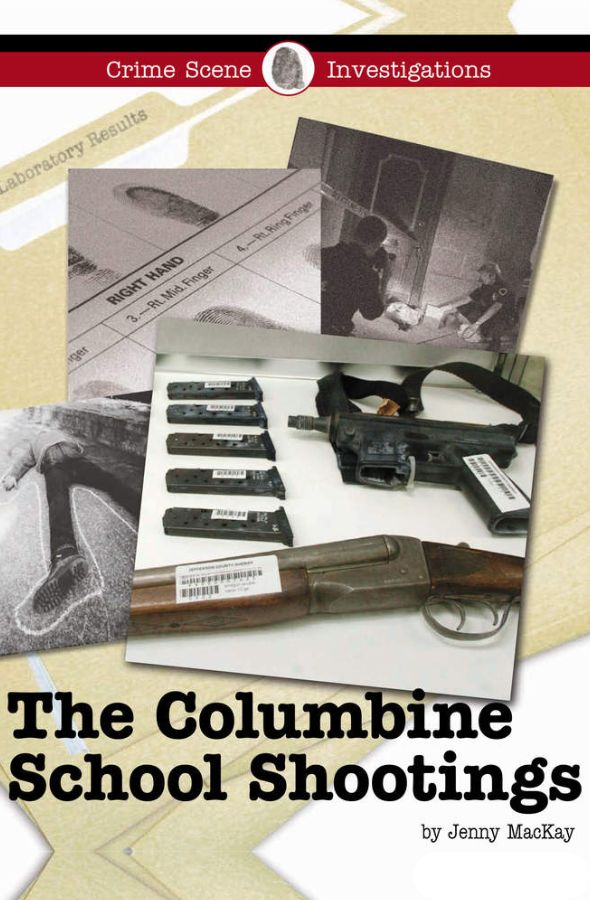A few months ago, I read A Mother’s Reckoning by Sue Klebold, mother of Columbine mass shooter Dylan Klebold. Whilst I found her memoir and insight into the tragic events of 20 April 1999 fascinating, I also found that the maternal author had gone to some lengths to tiptoe around the actual events of the day—instead filling her book with discussions about gun control, ‘brain health’, warning signs, and social systems to catch dangerous and vulnerable young people. It felt avoidant of the bloodshed, and even avoidant of being overly open about the Klebolds’ lives pre- and post-shooting.
Surprisingly, or maybe unsurprisingly, there are quite a few books dedicated to discussing Columbine. Some timeline everything leading up to it, and many try to pick apart the how and the why behind such an attack. Plenty of these books also seem to get basic details wrong, or lack discoveries and evidence that has come out about the shooting within the last decade or so. Therefore, the fairly condensed and honed-in The Columbine Schools Shootings by Jenny MacKay stuck out to me and advertised the factual element I was seeking out.
As part of the Crime Scene Investigations series, this overview and exploration of the Columbine Massacre cuts out a lot of fat and takes the unique angle of being very stats-driven. In terms of timeline, it is informative about the ongoings and fallout of the shooting, primarily fixating on the beginning of the attack (11am, 20 April 1999) and the weeks that followed.
The most valuable insight this book granted had nothing to do with the shooters themselves, or even their family and friends, but more so the general aftermath and destructive scale of Columbine as a whole. MacKay illustrates, with sourced references, how extensive and intensive the investigation into the crime scene was; the lacklustre training and information the police were provided with; a slow and disorganised SWAT response; and the many legal and ethical turmoil that sprung up in the aftermath, alongside grief and mourning.
What this book mainly covers is the emergency response to the scene; the many loose ends and procedures that had to be followed and patiently wrapped up after the shooting had ended; the killers (including their motives, weapons, and attainment of said weapons); the lessons learned and changes made following Columbine—alongside the clear pattern of school shootings, and Columbine’s inspiration for copycat attacks.
It doesn’t particularly care about any single individual, nor does it try to find any blame. It is a sterile and straightforward exploration of a rather complex, fast-paced, but thoroughly planned and premeditated attack on a school with more than two thousand students. And, truthfully, I like that it is not trying to pull on heart strings, does not aim to sympathise with the perpetrators, and does not get sucked into a rabbit hole of talking about bullying, depression, or the climate at Columbine High School in the late 1990s.
Moreover, I enjoyed the well-designed layout of the book, with subheadings and colour-coded sections. It also contains pictures and illustrations to highlight key points and add emphasis, as well as adding miscellaneous information about certain victims, police roles, other ongoings during 20 April 1999, or follow-on events like the Virginia Tech Massacre in 2007. There are also pages upon pages of references and sources at the back, which show the research MacKay (and anyone who assisted) put into this eighty-two-page exploration of a mass shooting.
I do think that it could have explored more of the aftermath of Columbine, since the exploration of that and the immediate emergency response to the shooting, were the most interesting parts of this book. It did contain some tiny errors, but it also clarified many misconceptions about the shooting and shooters, which also show a good amount of research into the killers and all other aspects of the shooting. Overall, it was an extremely accurate account of what happened, and explored the event from an investigative lens, rather than a humanistic and personal one.
As far as its role as a ‘crime scene investigation’ book, it definitely ticked all the boxes. It not only outlines all the investigative procedures that took place, but provides statistics about bullets fired, explosives detonated, hours spent on certain parts of the investigation, who and how many people were around, and how everything panned out from an external, law enforcement perspective. Crucially, it never glamorised or dramatised anything—which is crucial when exploring such a murderous and notorious event.
As a companion piece to A Mother’s Reckoning, it works well. Klebold’s book is an emotional memoir by someone forever linked to the shooting and its shooters, whereas MacKay’s The Columbine School Shootings is essentially free from questionable sympathy, opinionated views, or inaccurate statements. Definitely a worthwhile read for anyone who wants to spend an hour or two learning a bit more about such a notable, influential, and unfortunate event.

Leave a Reply